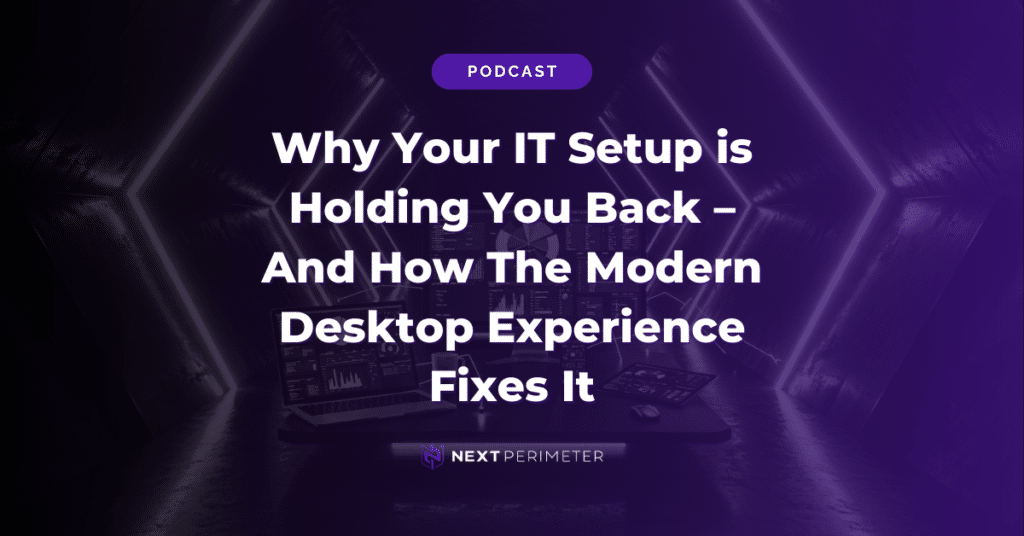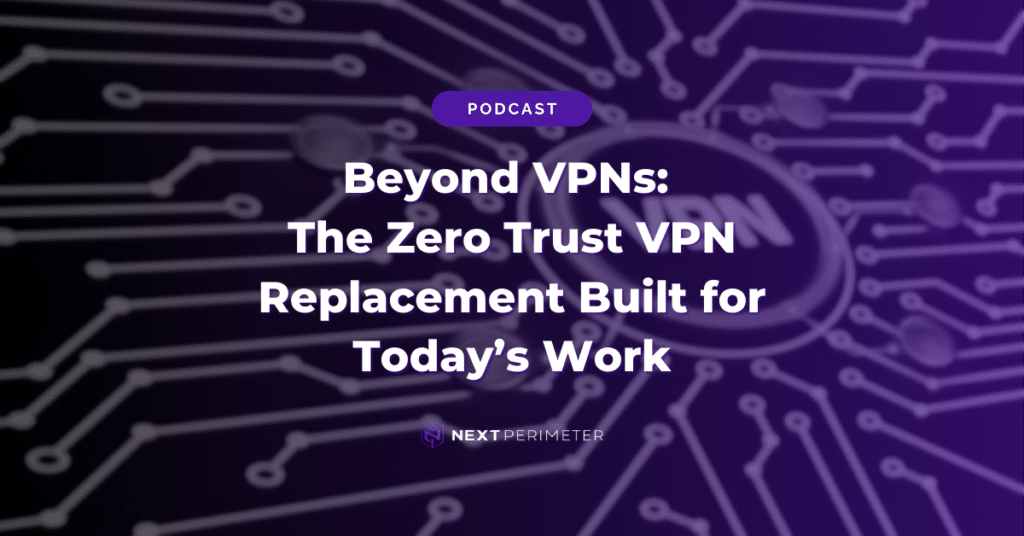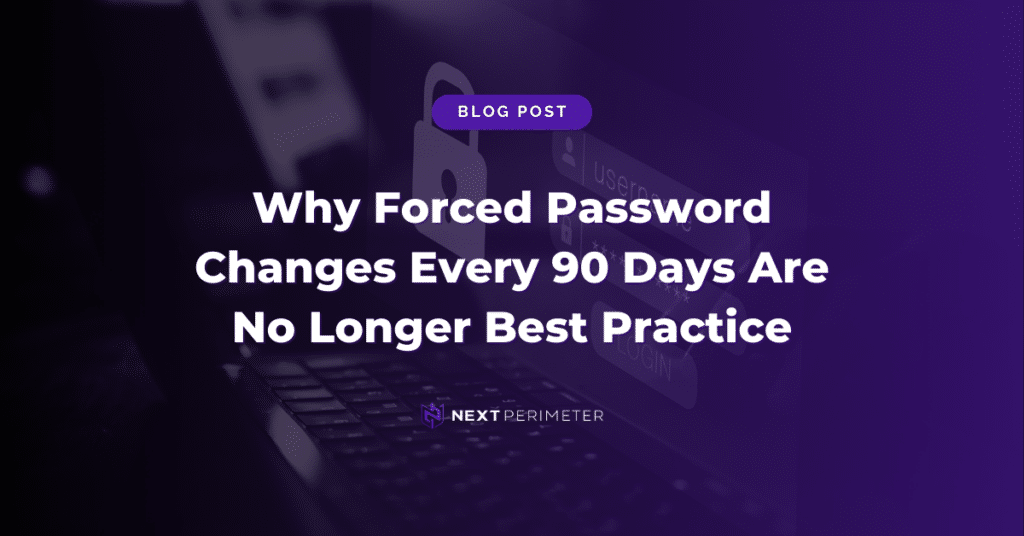Your IT should support your business, not slow it down. Yet, many organizations face daily frustration due to outdated technology.
If your business still relies on VPNs, legacy servers, or manually configured workstations, you are likely facing daily challenges that slow down operations, frustrate employees, and leave security gaps. Many companies struggle with slow device setups that delay new employees from getting started, constant troubleshooting that keeps IT teams reactive rather than proactive, and security vulnerabilities that put business-critical data at risk. The reliance on outdated VPNs further complicates remote work, leading to inefficiencies that impact productivity.
These challenges are not unique. Most businesses are still managing IT in a way that is no longer sustainable. The good news is that there is a better way.
What is The Modern Desktop Experience?
The Modern Desktop Experience transforms IT from a burden into a seamless, secure, and efficient system.
The Modern Desktop Experience is a cloud-first IT solution that eliminates the complexity of legacy IT systems. Instead of relying on on-premises servers, businesses transition to cloud identity solutions, replacing traditional domain controllers. Secure Access Service Edge (SASE) replaces outdated VPNs, providing a cloud-first IT solution for faster and more secure remote access. Security is reinforced with a Zero Trust security model, which verifies every device, user, and login attempt before granting access.
The Modern Desktop Experience also streamlines device management. Pre-configured workstations arrive ready to use, reducing downtime and eliminating manual IT setups. Automated patching and security updates ensure that devices remain compliant and protected without IT teams having to manage each update manually. This approach simplifies IT operations, enhances security, and ensures that employees can focus on their work without technical disruptions.
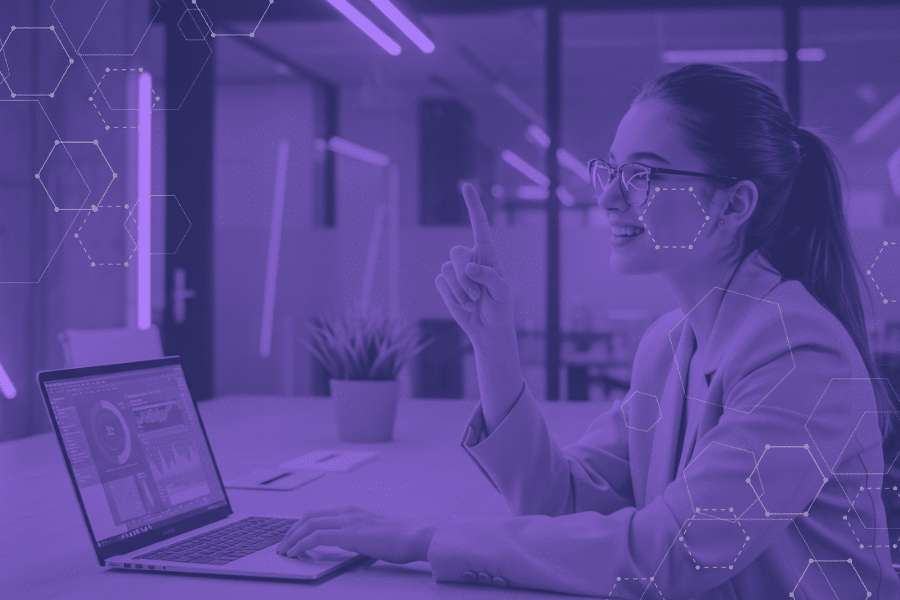
Why Legacy IT is Failing Businesses
Many businesses are still relying on outdated IT infrastructure, and it’s causing more harm than good.
Legacy IT makes business operations harder than they need to be. As companies grow and adapt to remote work, outdated systems create security risks and slow everything down. As companies expand and adapt to remote work environments, these outdated systems become increasingly difficult to manage, leaving organizations vulnerable to cyber threats and operational bottlenecks.
Increased Security Risks
Most businesses were not designed with today’s remote work environment in mind, but cybercriminals have adapted quickly. Companies that rely on legacy IT systems are often the primary targets of cyberattacks. Recent data shows that a majority of ransomware attacks now target small and medium-sized businesses that lack strong endpoint security.
Unmanaged devices, weak passwords, and outdated security policies create vulnerabilities that attackers can easily exploit. VPN credentials, once considered a security staple, are now a primary target for hackers and frequently end up being sold on the dark web.
Real-World Example: The Cost of Poor Offboarding
A finance firm learned firsthand the risks of outdated IT processes when a former employee retained access to sensitive files long after they had left the company. Without an automated offboarding process, the company had no way to ensure that departing employees no longer had access to internal systems.
After switching to the Modern Desktop Experience, the firm implemented Zero Trust policies, ensuring that employees could only access data while they were actively employed. As a result, all access rights were automatically revoked the moment an employee left the company, eliminating the risk of unauthorized access.

The Five Core Components of The Modern Desktop Experience
Each component of the Modern Desktop Experience is designed to remove IT bottlenecks while enhancing security and productivity.
The Modern Desktop Experience is designed to eliminate complexity. It enhances security, simplifies IT management, and improves the employee experience. By implementing these core elements, businesses can eliminate outdated systems and transition to a more efficient IT model.
Cloud Identity and Device Management
Cloud-based identity and device management remove the need for on-premises servers and manual user provisioning. Employees authenticate through Azure AD (Entra ID) or Google Workspace, ensuring secure, centralized access. Devices are automatically configured, updated, and secured without requiring IT intervention.
Secure Access Service Edge (SASE)
Traditional VPNs are slow, unreliable, and introduce security risks. SASE replaces VPNs with a more seamless, secure remote access solution. By using cloud-based network security, businesses ensure that employees can work from anywhere without connectivity issues or exposure to cyber threats. Built-in threat detection automatically blocks malicious traffic, adding an extra layer of security.
Zero Trust Security Framework
Zero Trust security eliminates assumptions about user trust. Every login attempt, device, and access request is verified before being granted access. If an account is compromised, Zero Trust policies immediately lock down access, reducing the risk of unauthorized data breaches. Multi-Factor Authentication (MFA) is enforced as part of the framework, ensuring that access requires more than just a password.
Standardized, Pre-Configured Workstations
Outdated IT setups often involve time-consuming device configurations that delay productivity. With the Modern Desktop Experience, new hires receive pre-configured, security-hardened workstations that are ready to use from day one. If a replacement device is needed, a fully configured workstation can be shipped out immediately, eliminating downtime. Employees can work from anywhere with built-in security measures ensuring compliance and data protection.
Automated Patching, SIEM Monitoring, and Compliance
Businesses must stay compliant with industry regulations, but manual patching and security monitoring create unnecessary workload for IT teams. With automated patching and Security Information and Event Management (SIEM) monitoring, every device stays up to date, ensuring that security vulnerabilities are addressed immediately. Compliance is streamlined across industries such as finance, healthcare, and legal, reducing risks and simplifying IT oversight.
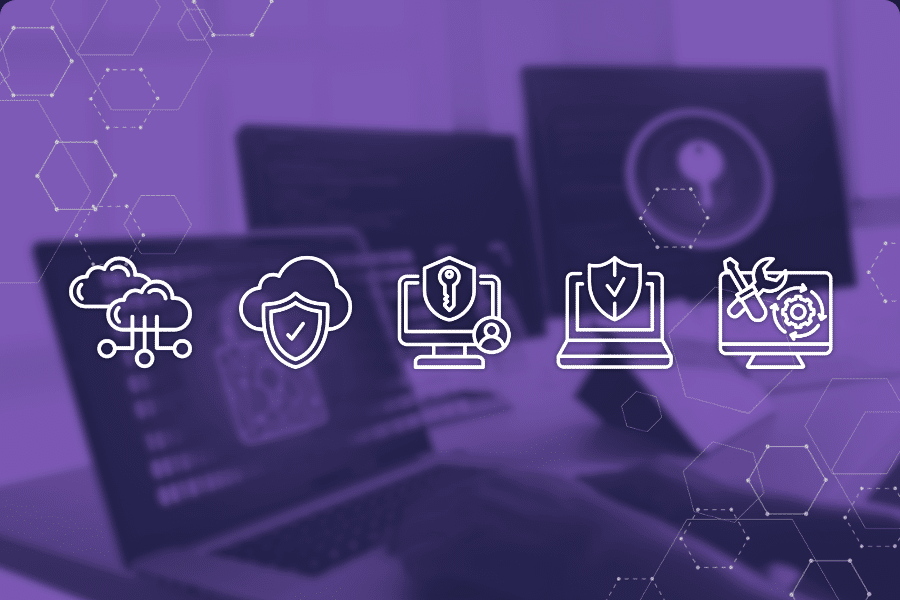
The Business Impact: Faster, Safer, Simpler IT
By implementing the Modern Desktop Experience, businesses see real, measurable improvements in efficiency and security.
The Modern Desktop Experience benefits the entire business. From security to efficiency, it drives measurable improvements. From streamlined onboarding to improved security, these improvements drive overall business success.
Improved Onboarding Efficiency
Legacy IT models often result in employees waiting days for their devices to be configured and for their accounts to be set up. With pre-configured workstations and cloud-based identity management, onboarding times are reduced from days to minutes. New hires can start working immediately, boosting overall productivity and reducing strain on IT resources.
Enhanced Security and Reduced Incidents
Automated security updates and Zero Trust enforcement lead to a significant reduction in security incidents. Businesses that transition to the Modern Desktop Experience report fewer breaches and lower cybersecurity risks. The ability to monitor and control all devices centrally ensures that IT teams can proactively manage threats instead of constantly responding to incidents.
Reduced IT Overhead and Cost Savings
Businesses that rely on traditional IT setups face ongoing costs related to manual troubleshooting, device configurations, and security patching. By automating these processes, IT teams can shift their focus from maintenance to strategic initiatives. The overall reduction in IT tickets and security incidents leads to cost savings and improved efficiency across the organization.
Ready to Upgrade? Get the Free Modern Desktop Playbook
Transitioning to the Modern Desktop Experience is easier than ever. Our Modern Desktop Playbook provides a step-by-step guide to upgrading IT systems with minimal disruption. Businesses that implement this approach gain access to secure, pre-configured workstations, automated security measures, and a seamless IT experience.
Download the Modern Desktop Playbook today or schedule a consultation to learn how Next Perimeter can help your business make the transition. IT should be an enabler, not an obstacle. It’s time to move forward.

